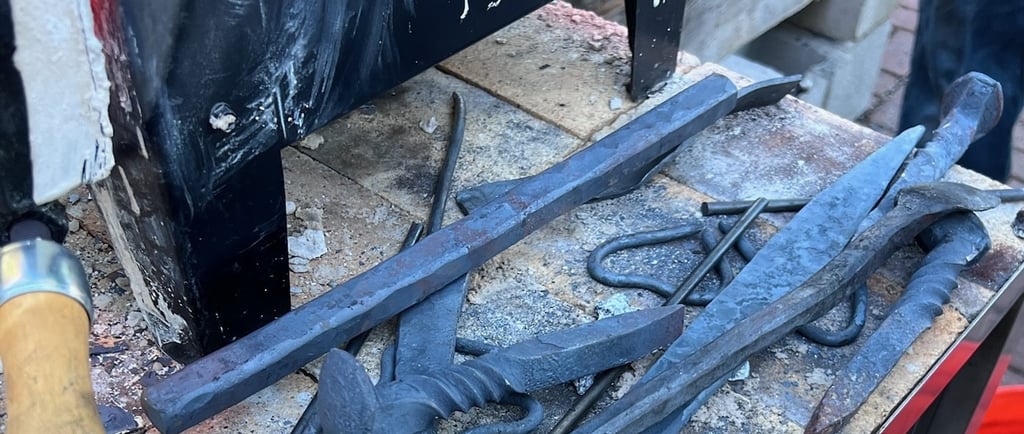Best Metal for Beginners
Today I will be discussing the general properties of a few types of metals for beginning blacksmiths.
Isaiah Regan
1/28/2025


When you first start blacksmithing, one of your biggest concerns is what is the best metal to use. To put it simply, there is no best metal. For example, hammers, tongs, and other tools can be made effectively with a medium-carbon steel like 1045. For work that is decorative or does not need to remain hard like tent stakes or fire pokers, mild steel is your best option. Knives should be made with high-carbon steel so that they will retain a hard, sharp edge for as long as possible. Medium carbon steels, which have a carbon content of 0.25% carbon to 0.50% carbon, move relatively easily under the hammer but you have to be careful not to cool it in water because it can harden and crack. I recommend medium-carbon for making tools like chisels and punches. My personal recommendation is 1045 steel, though some rebar also crosses into the medium-carbon range. Low-carbon steel is the range of steels that have less than 0.25% carbon content. They will not harden and are very easy to work with. This steel is generally much cheaper than other types of steel. Also, mild-carbon steel is easy to find for free, because most steel used in modern life is mild-carbon. I personally use 1018 mild-carbon steel in my work, but any type of mild steel will work. An easy test to differentiate between mild, medium, and high-carbon steels, is to take a small piece of the metal and forge it out into a thin bar, next, mark off the bar every inch or so with a chisel and put the piece in the fire. Watch as the heat travels down the bar. Ideally, you want one end to be burning hot and the other end to barely be red. Once you have a wide spectrum of heat represented on the bar, quench it in water. Now, you can use a file to test each section for hardness. If you find a few consecutive sections that are hard, when the file skates off the metal that means it is hard, then you most likely have a medium to high carbon steel. Also, if you pay attention to the heat of each section, you will also know the optimal heat for the quench. Now we come to the section that I have a bit more experience in, high-carbon steels. These steels have 0.60% to 1.5% carbon content and have great hardenability. These steels like 1095, 1080, 80crv2, and 52100, are much harder to forge because of the high carbon content and other alloying elements. For the beginner, the cheapest option will probably be using old files, which are usually made of W-1 high-carbon steel, which also has the upside of being water-quenchable. My personal recommendation is 1095 Steel because of its availability as well as its high carbon content. All of the steels I have mentioned can be found online, though the price can be a hindrance at times. I use Jantz Knife Supply, Blacksmith Depot, and New Jersey Steel Baron for most of my steel needs. I hope this little introduction to the main types of steel will be useful to you.
